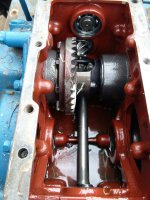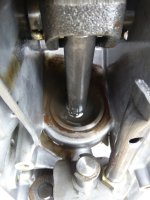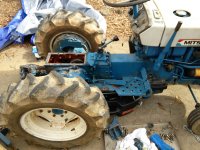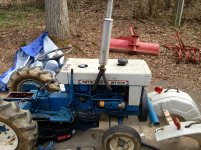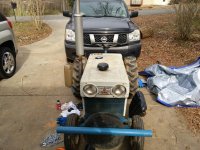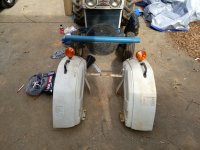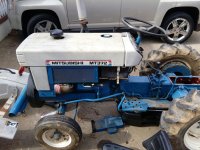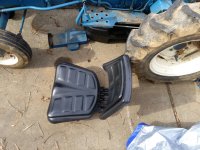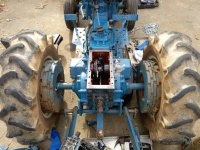The wiring diagram I have for an MT372 shows yellow with blue wires from the oil pressure sender up to the warning lamp. It shows black with yellow and black with white wires to the starter, and some other of indeterminate color coding. (B AV2 is what I *think* it says). I'm not entirely convinced of the accuracy of the manual, however: The legend says "Blw" stands for wire that is "Blown." I'm strongly suspicious that there may have been some mis-translation afoot in some portions of the manual...
My questions are these: How have you assessed that there is fuel arriving at the cylinders, and how do you know the compression is good?
Having said that, I agree it is most probable that your glow plug situation is the likely culprit. I would get a tester (Of the light-bulb or multimeter type) and test for continuity on all the glow plugs. Test to the center of the electrode with the other end grounded on the battery negative terminal. If there is no continuity, the glow plugs are bad.
After that, it is a straightforward assessment: Power must be delivered from the glow plug activation switch to the plugs. Follow the feed wire back to the switch, and test for power from the battery TO the switch. If there is power, but it doesn't get to the glow plug feed wire, then you have switch trouble. A very short workaround is that if the switch will activate the starter motor, the switch obviously has power.
Even with bad/non operational glow plugs my tractors will always at least smoke. If there's no smoke, you should check your fuel delivery situation.
I had the jammed lift cylinder situation as well. Instead of doing it properly, as skylarkguy did, (Typical of Buick owners, in my experience

) I did it in a more barbaric fashion. I secured a piece of chain between the lift arms, wedged a large 4x8 under the rear of the tractor and across the chain, then bounced my 250 pound self on the end of the 4x8.
It let go with a sudden bang and crash, and I'm actually rather lucky I didn't injure myself in my foolishness. I would actually be worried about perhaps damaging the tractor, as well, with the tremendous force being placed on the tip of the lumber.
After freeing it, however, it does operate fully and smoothly. The cylinder continually leaks down, however, I'm sure because I have not yet replaced the seals and honed the bore. I wouldn't recommend this method, but I have done it, and it's an option of sorts. Make sure the lift lever is in the fully lowered position, and that the speed adjuster is at minimum restriction.
Good luck, let us know your results!
